Out The Wastelands
A Journey Through the Great Lakes of Purgatory
What are the borders between art and the Commons? What happens when those borders, and the borders between self and other, are crossed and erased? The Wastelands Project—a traveling theatre, film, and social living experiment—travels across the inner seas of North America to explore these and other questions. The following is a report back from the ensemble, Children of the Wild, in two parts.
PART I: This Is How It Begins
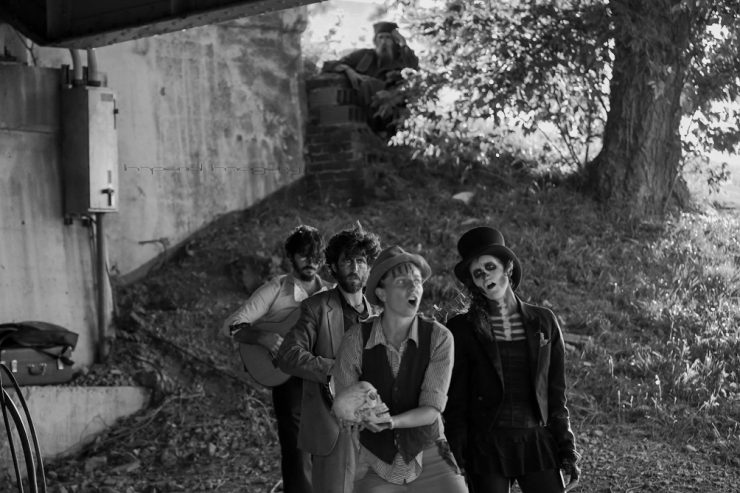
Pre-Prologue
Stop thinking about climate change for a minute.
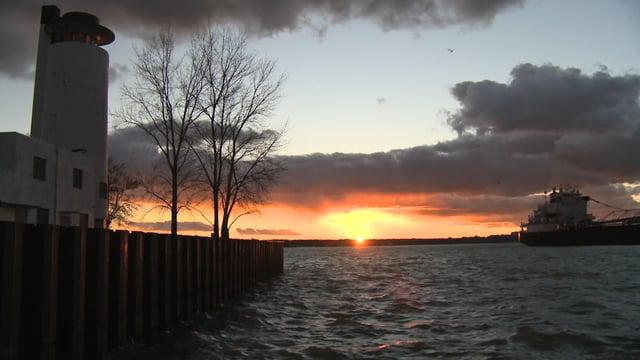
Now, start in a comfortable position. Notice your breath. Don’t try to change it, just notice. How your breath is naturally moving in, through, and out your lungs. Let your breath fill your body. Feel it fill every part of you, from the top of your head all the way to the edges of your fingers and toes; feel it expand. Notice if there’s a place where air is getting stuck; bring attention to that place and try giving it air. Like you’re taking a nap, you can adjust your position to be more comfortable.
This is called a body scan. There are a million ways to do it (or more: imagine you’re a balloon; bring focus to your pancreas); it’s not necessarily the best way, only one way to get in touch, to partner with your breath. However you approach the inner landscape of your body, it will be important to locate this interior presence when the lights go out—as a friend on the Fond du Lac reservation in northern Minnesota puts it—on Western civilization.
What happens inside the body is a continuation of what happens outside the body. The planet is dying—it’s an open secret—and no one knows how to stop it, at least no one worth trusting, because, after all, death can’t be stopped. As in, so out. Somewhere in the quest of the West to civilize the world, the conquistadors and we inheritors of these stolen treasures have brutally tamed, if not damned, our souls.
We see this historical moment as a time to breathe together, to share our most dangerous thoughts and deepest desires when it comes to moving beyond the walls of civilization, real and proposed.
All the same, we may be in a better position than we think. The enemy doesn’t rest, but neither does the living breath of this Earth. At present many people are redefining what it means to be a human being on this land and what it means to resist the narrative of progress. Look to Standing Rock. Look to Blockadia. Look to the movement for Black Lives Matter.
Look to your friends. “To conspire,” from the Latin com + spirare, means simply “to breathe together.” We see this historical moment as a time to breathe together, to share our most dangerous thoughts and deepest desires when it comes to moving beyond the walls of civilization, real and proposed.
The fact is that we are not alone. As William Martin notes in his propitious book The Activist’s Tao Te Ching, “when we unite in our common cause, we present a visible force and are taken seriously. But it is the invisible spirit within us, seen by no one, that will do the work.”
This new revolution will not resemble anything that came before it. It does not look toward the future; grounded in the ancient past, this revolution searches deeply in the present. No one is leading this revolution, because everyone is leading. We have no idea where it’s going, and that’s the point. It will overthrow even itself. Like death, it cannot be stopped.
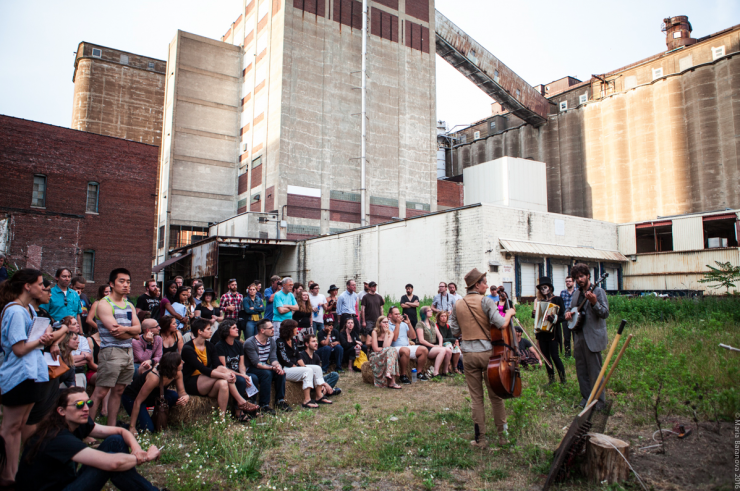
Prologue
At the time of this writing Children of the Wild is in Minneapolis preparing for the last performances of The Wastelands, an original folk opera inspired by Dante’s Purgatorio. This three-night performance is the culmination of a wild, sixth-month journey across the Great Lakes region, taking this plucky ensemble from the foothills of New England through the Rust Belt and Iron Range of the United States.
The Minneapolis performance is taking place at Fruen Mill, an abandoned paper mill on Bassett Creek near the city’s expansive Theodore Wirth Park.
Since May Day, Children of the Wild has been traversing the inner seas of North America—from Buffalo, New York, to Duluth, Minnesota—performing The Wastelands for free in the mills, silos, underground railroads, abandoned parking lots, sidewalks, pipeline pump stations, and lumber yards of the great American interior.
“Wisdom,” again looking to Martin, “sees and hears the outer world, but acts only at the urgings of the inner world.”
If for Dante purgatory was seen as a seven-storey mountain, what is the landscape of purgatory for our times? With all the divergent struggles to protect our bodies, our communities, and our environment, where is the common ground? How do we locate hope when the outside world is on fire?
So this project started with a call.
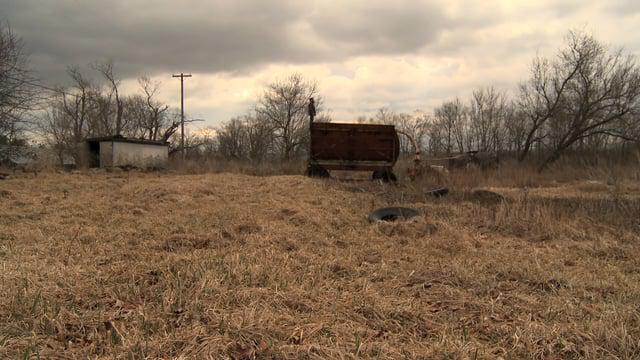
In the buckling infrastructure that has come to dominate the landscape of imagination in the Great Lakes region—the “largest and most populated megalopolis in North America” according to the common knowledge basin called Wikipedia—we Children of the Wild see something under the rubble: not escape routes, but different ways of seeing the inferno that we have made.
Context is everything, or a lot anyway. The context within which we find ourselves is in mid-disintegration of the American Empire, a time when natural and artificial cycles alike are spinning out of control. Witness this year’s bizarre and despairing presidential cycle, a great symbol of the collapse of legitimacy. Representative democracy is running away like the climate it attempts to engineer.
We have a different proposal.
As the myth of progress crumbles before our eyes, we lose hope that the market or the nation can fix the problems they themselves created. Walls won’t keep out fear; jobs can’t enrich inner destitution. Hope, therefore, dwells, we find, outside the marketplace, unsanctioned by the state. Neither CNN nor Fox will cover this story—why would they? It’s not sexy, it fits no standard narrative of social change, and there is no clear spokesperson. Precisely here is where we begin our search: in the everyday, in the uncovered, in the Commons.
Salvatore Iaconesi, Italian philosopher of the Commons, talks of the “new normalcy field” in which living experiments like ensemble-creation are redefining what it means to live in society. We believe this questioning can be pushed further. What does it mean to live in something other than society? What does it mean to rewild society? What does it mean to rewild the human spirit?
The wastelands described herein are contested sites, places in deep transition, front lines of a rewilding we do not yet fully understand, that we certainly cannot control. The fates of these places are bound up with the people who live there. Like Dante Alighieri, we are exploring what comes after death—in this case, the death of progress. That is what this report, structured like The Wastelands show itself, offers: a brief and fractured look into our inner thinking and doings on the inner seas of North America, a place of great transition.
Scene I: Western Massachusetts
“The education of an actor in our theatre is not a matter of teaching him something; we attempt to eliminate his organism's resistance to this psychic process,” proclaims Jerzy Grotowski, renowned Polish theatremaker who inadvertently planted the mustard seed that would one day grow into a collapsible metal tree called Children of the Wild. “Ours then is a via negativa—not a collection of skills but an eradication of blocks.”
Children of the Wild began as the continuation of a river project, when a young theatre troupe then called The Unseen Ghost Brigade (UGB) built a raft and traveled down the Mississippi with a tragicomic show about death on the river. After that journey two UGB members—Walken Schweigert and Augustin Ganley—migrated to Double Edge, a distinguished ensemble theatre and “living culture” center nested on an old 105-acre dairy farm in the rural town of Ashfield, Massachusetts.
Double Edge carries on a theatre tradition initiated by Grotowski, a resurrectionist who thought deeply about the roots of this thing called theatre and called upon the ancients to aid his labor of working it out. But like any American company, Double Edge has taken a European idea, mashed it up with others, and made it its own.
Grotowski and his collaborators formulated a process called devising, wherein the actors create the story themselves, in ensemble. Together they investigated the core essence of theatre, what makes it unique from all other arts. The relationship between actor and audience, Grotowski reveals in his treatise Toward a Poor Theatre, is the crux. For Jerzy that relationship is a poor one, in need of no lights, makeup, plot devices, or even stage. That poverty in material wealth is what makes theatre so rich in mystery and spirit.
As an ensemble who for the past four years has developed under the guidance of Double Edge, Children of the Wild is a disciple of a disciple of a disciple of the Resurrector. The core of Double Edge’s methodology for devising theatre is a practice called training—a rigorous physical and artistic process of pushing past one’s limits of bodily exhaustion to tap into different wellsprings of imagination, a practice that resists all attempts at neat definition or theories.
In the foothills of western Massachusetts, then, we began training our question of rewilding. Biologically understood as nonhuman life, what is the wildness, we ask, within our hearts?
Actively asking this question allowed us to find each other, to draw upon shared source material (Purgatorio, Danse Macabre, photographer Robert ParkeHarrison’s The Architect’s Brother, a photographic series in nine parts, the music of Godspeed You! Black Emperor) to devise an opera, to engage with our environment in surprising ways. A deep immersion in our surroundings shaped the entire course of what would come.
Starting in Ashfield, we heard word of a fracked gas pipeline that was being proposed to cut through the middle of town, and we quickly engaged with the community’s response to such an existential threat.
That engagement yielded surprising and strong relationships. This first dispatch tells the story from the perspective of one neighbor resisting the pipeline.
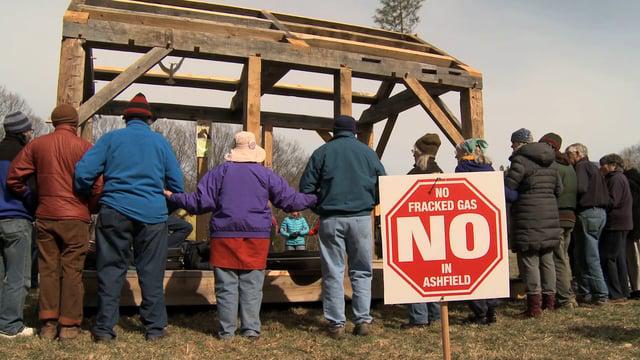
From this engagement we created a series of performances called Pipeline Processions.
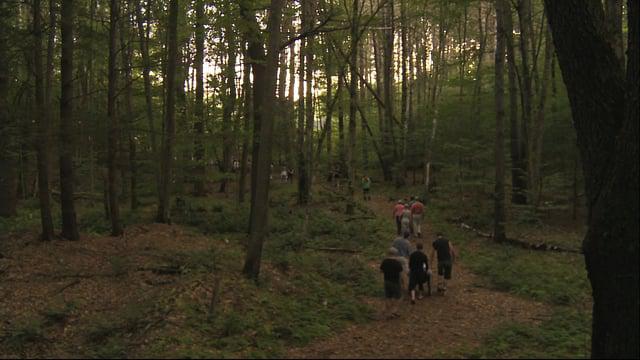
Somewhere in the mystery of this show and our process we were hunting down something vital, something heretofore missing in our experience of theatre and social living.
Pipeline Processions took audiences and community members through seven different places—backyards, farms, conservation land, retreat centers, sacred plains—that would be lost if the pipeline were allowed to pass. These performances deepened our own research into rewilding and bore fruit that we used to devise what would ultimately become The Wastelands. The NED pipeline, it should be noted, was ultimately stopped, thanks to the grassroots resistance it faced.
For the next year we developed this show, presenting it for the first time on May Day in Holyoke, MA, at a former paper mill on the Connecticut River.
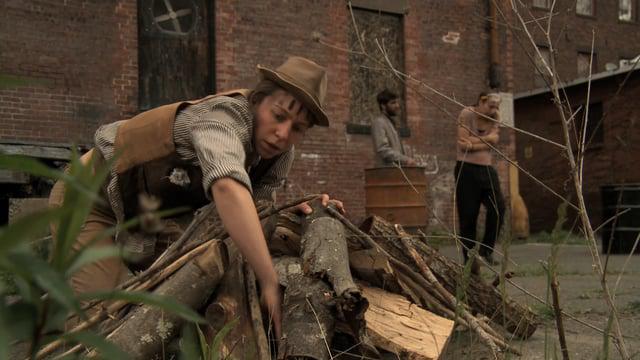
Our audiences responded with a hunger and fervor we could not have imagined. Somewhere in the mystery of this show and our process we were hunting down something vital, something heretofore missing in our experience of theatre and social living.
And thus did our journey begin. From western Mass we packed up a truck with stumps and barrels and a big metal tree and began our migration across the American interior in pursuit of the rewilding spirit. What would follow, we didn’t know at the time, would forever change our understanding of who was in control of the water and who was in control of the climate. It would shake our understanding ourselves to the core.
As we run out of clean air.
PART II will follow with a report back on Scenes 2–7, picking up the journey in Buffalo, New York.

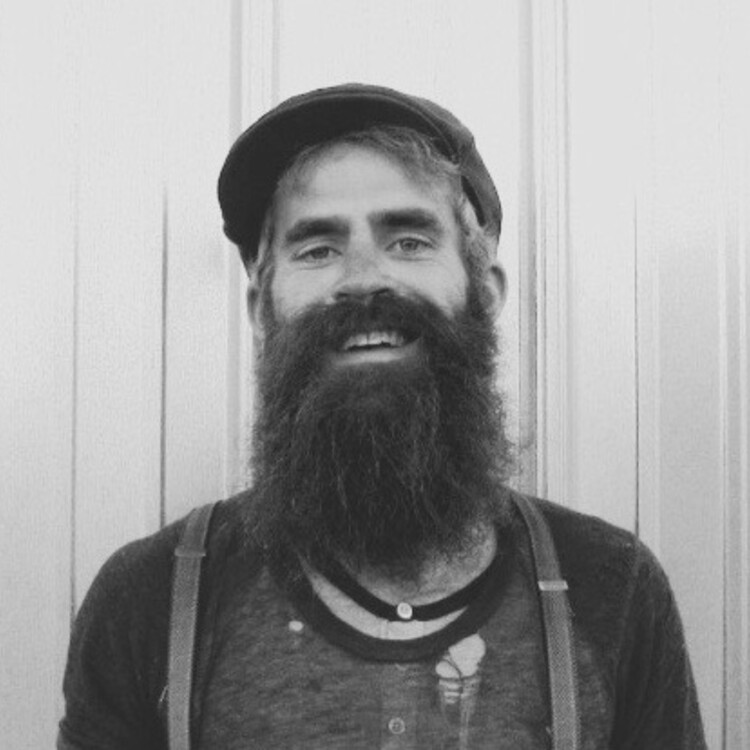
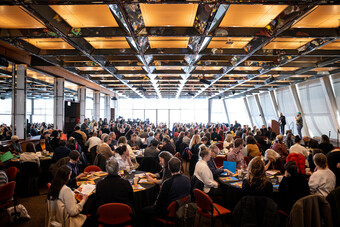

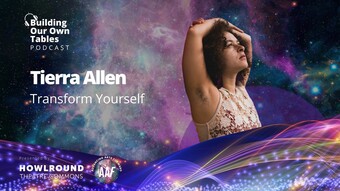


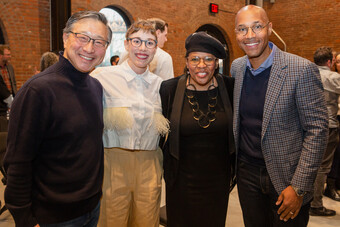

Comments
The article is just the start of the conversation—we want to know what you think about this subject, too! HowlRound is a space for knowledge-sharing, and we welcome spirited, thoughtful, and on-topic dialogue. Find our full comments policy here